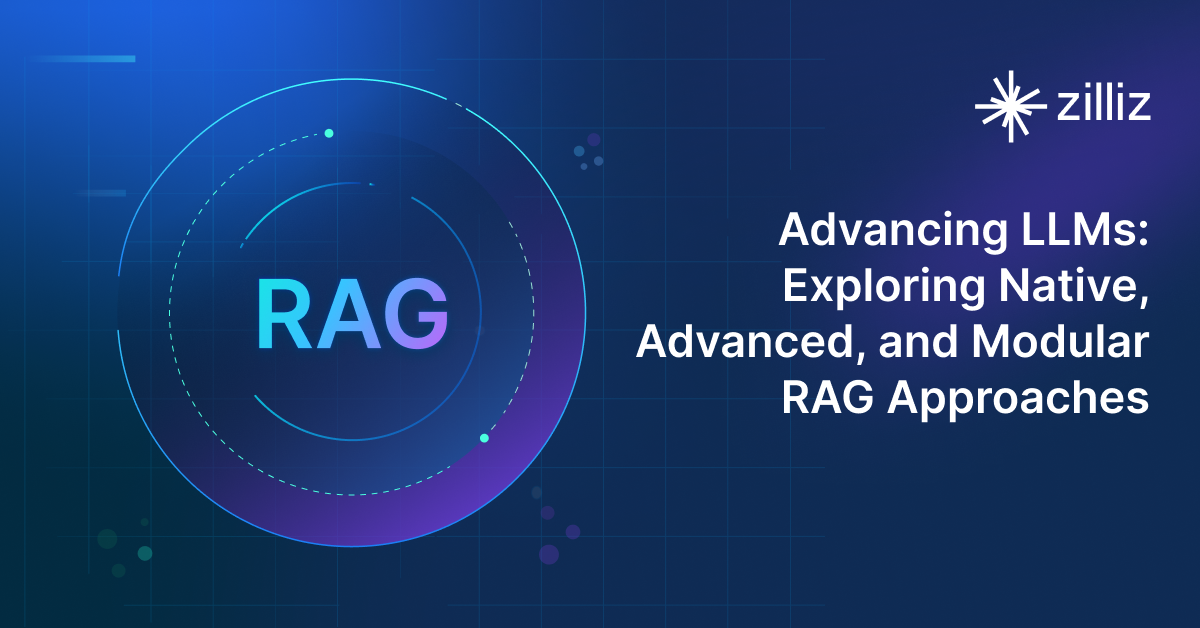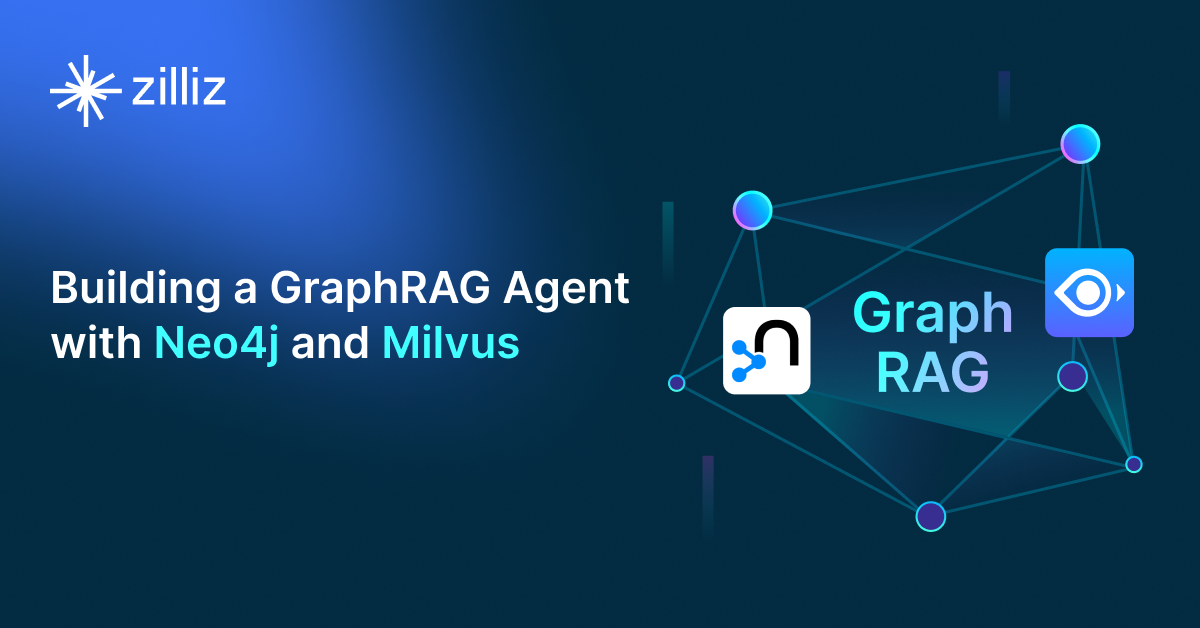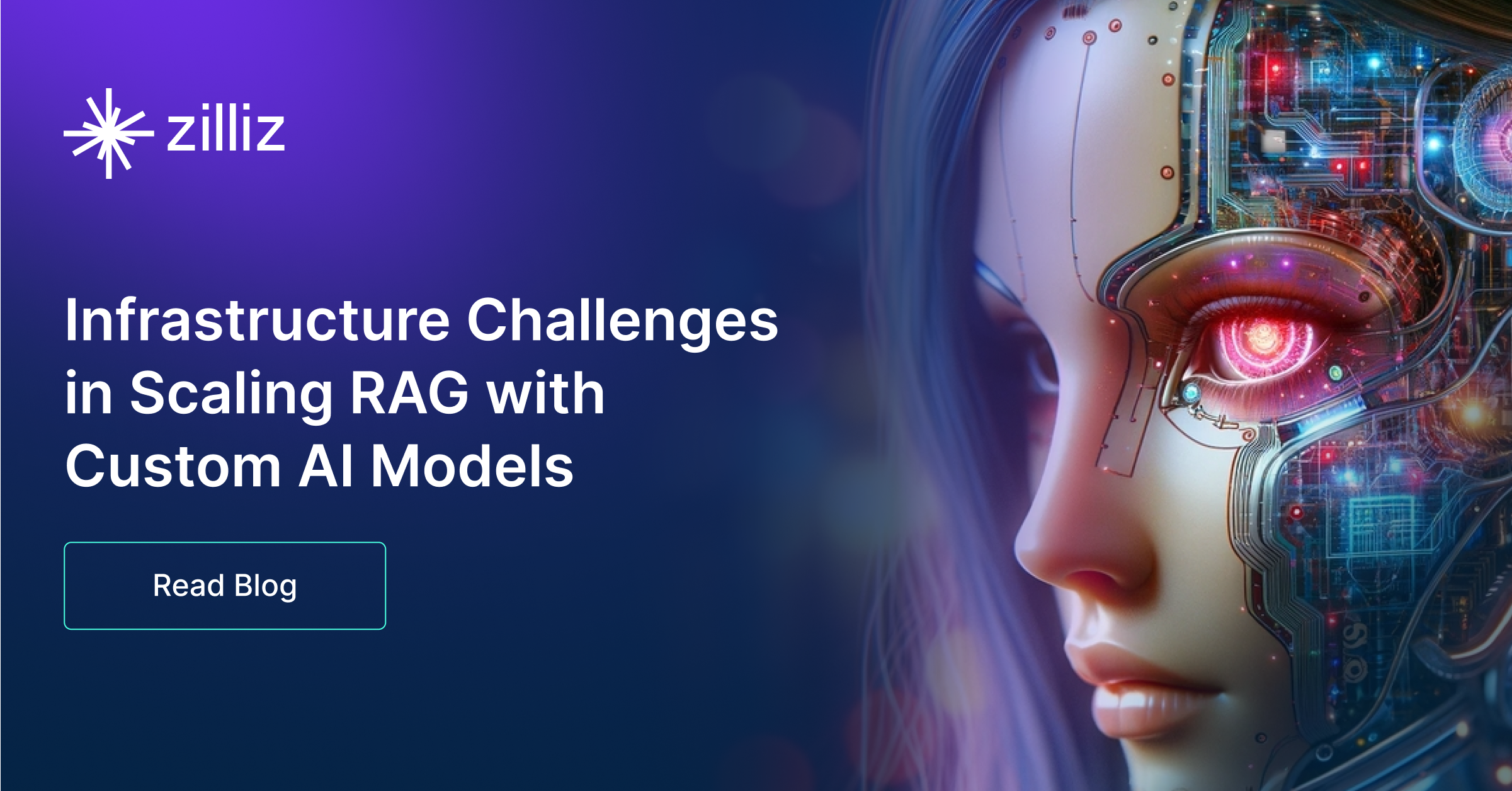Build RAG Chatbot with Llamaindex, Zilliz Cloud, Gemini 2.0 Flash-Lite, and OpenAI text-embedding-3-large
Introduction to RAG
Retrieval-Augmented Generation (RAG) is a game-changer for GenAI applications, especially in conversational AI. It combines the power of pre-trained large language models (LLMs) like OpenAI’s GPT with external knowledge sources stored in vector databases such as Milvus and Zilliz Cloud, allowing for more accurate, contextually relevant, and up-to-date response generation. A RAG pipeline usually consists of four basic components: a vector database, an embedding model, an LLM, and a framework.
Key Components We'll Use for This RAG Chatbot
This tutorial shows you how to build a simple RAG chatbot in Python using the following components:
- Llamaindex: a data framework that connects large language models (LLMs) with various data sources, enabling efficient retrieval-augmented generation (RAG). It helps structure, index, and query private or external data, optimizing LLM applications for search, chatbots, and analytics.
- Zilliz Cloud: a fully managed vector database-as-a-service platform built on top of the open-source Milvus, designed to handle high-performance vector data processing at scale. It enables organizations to efficiently store, search, and analyze large volumes of unstructured data, such as text, images, or audio, by leveraging advanced vector search technology. It offers a free tier supporting up to 1 million vectors.
- Gemini 2.0 Flash-Lite: An ultra-lightweight AI model optimized for cost-effective, real-time language tasks. Designed for efficiency, it is ideal for embedded AI applications, mobile devices, and environments where fast response times and minimal resource usage are critical.
- OpenAI text-embedding-3-large: A state-of-the-art embedding model designed to convert text into high-dimensional vectors, capturing deep semantic relationships. Renowned for its accuracy, scalability, and ability to handle long contexts (up to 8192 tokens), it excels in semantic search, retrieval-augmented generation (RAG), recommendation systems, and multilingual NLP tasks requiring nuanced language understanding.
By the end of this tutorial, you’ll have a functional chatbot capable of answering questions based on a custom knowledge base.
Note: Since we may use proprietary models in our tutorials, make sure you have the required API key beforehand.
Step 1: Install and Set Up Llamaindex
pip install llama-index
Step 2: Install and Set Up Gemini 2.0 Flash-Lite
%pip install llama-index-llms-google-genai llama-index
from llama_index.llms.google_genai import GoogleGenAI
llm = GoogleGenAI(
model="gemini-2.0-flash-lite",
# api_key="some key", # uses GOOGLE_API_KEY env var by default
)
Step 3: Install and Set Up OpenAI text-embedding-3-large
%pip install llama-index-embeddings-openai
from llama_index.embeddings.openai import OpenAIEmbedding
embed_model = OpenAIEmbedding(
model="text-embedding-3-large",
)
Step 4: Install and Set Up Zilliz Cloud
pip install llama-index-vector-stores-milvus
from llama_index.core import VectorStoreIndex, StorageContext
from llama_index.vector_stores.milvus import MilvusVectorStore
vector_store = MilvusVectorStore(
uri=ZILLIZ_CLOUD_URI,
token=ZILLIZ_CLOUD_TOKEN,
dim=1536, # You can replace it with your embedding model's dimension.
overwrite=True,
)
Step 5: Build a RAG Chatbot
Now that you’ve set up all components, let’s start to build a simple chatbot. We’ll use the Milvus introduction doc as a private knowledge base. You can replace it with your own dataset to customize your RAG chatbot.
import requests
from llama_index.core import SimpleDirectoryReader
# load documents
url = 'https://raw.githubusercontent.com/milvus-io/milvus-docs/refs/heads/v2.5.x/site/en/about/overview.md'
example_file = 'example_file.md' # You can replace it with your own file paths.
response = requests.get(url)
with open(example_file, 'wb') as f:
f.write(response.content)
documents = SimpleDirectoryReader(
input_files=[example_file]
).load_data()
print("Document ID:", documents[0].doc_id)
storage_context = StorageContext.from_defaults(vector_store=vector_store)
index = VectorStoreIndex.from_documents(
documents, storage_context=storage_context, embed_model=embed_model
)
query_engine = index.as_query_engine(llm=llm)
res = query_engine.query("What is Milvus?") # You can replace it with your own question.
print(res)
Example output
Milvus is a high-performance, highly scalable vector database designed to operate efficiently across various environments, from personal laptops to large-scale distributed systems. It is available as both open-source software and a cloud service. Milvus excels in managing unstructured data by converting it into numerical vectors through embeddings, which facilitates fast and scalable searches and analytics. The database supports a wide range of data types and offers robust data modeling capabilities, allowing users to organize their data effectively. Additionally, Milvus provides multiple deployment options, including a lightweight version for quick prototyping and a distributed version for handling massive data scales.
Optimization Tips
As you build your RAG system, optimization is key to ensuring peak performance and efficiency. While setting up the components is an essential first step, fine-tuning each one will help you create a solution that works even better and scales seamlessly. In this section, we’ll share some practical tips for optimizing all these components, giving you the edge to build smarter, faster, and more responsive RAG applications.
LlamaIndex optimization tips
To optimize LlamaIndex for a Retrieval-Augmented Generation (RAG) setup, structure your data efficiently using hierarchical indices like tree-based or keyword-table indices for faster retrieval. Use embeddings that align with your use case to improve search relevance. Fine-tune chunk sizes to balance context length and retrieval precision. Enable caching for frequently accessed queries to enhance performance. Optimize metadata filtering to reduce unnecessary search space and improve speed. If using vector databases, ensure indexing strategies align with your query patterns. Implement async processing to handle large-scale document ingestion efficiently. Regularly monitor query performance and adjust indexing parameters as needed for optimal results.
Zilliz Cloud optimization tips
Optimizing Zilliz Cloud for a RAG system involves efficient index selection, query tuning, and resource management. Use Hierarchical Navigable Small World (HNSW) indexing for high-speed, approximate nearest neighbor search while balancing recall and efficiency. Fine-tune ef_construction and M parameters based on your dataset size and query workload to optimize search accuracy and latency. Enable dynamic scaling to handle fluctuating workloads efficiently, ensuring smooth performance under varying query loads. Implement data partitioning to improve retrieval speed by grouping related data, reducing unnecessary comparisons. Regularly update and optimize embeddings to keep results relevant, particularly when dealing with evolving datasets. Use hybrid search techniques, such as combining vector and keyword search, to improve response quality. Monitor system metrics in Zilliz Cloud’s dashboard and adjust configurations accordingly to maintain low-latency, high-throughput performance.
Gemini 2.0 Flash-Lite optimization tips
Gemini 2.0 Flash-Lite is designed for lightweight and efficient processing, so optimize retrieval by focusing on precision rather than volume. Use minimal yet highly relevant document chunks to keep token usage low. Implement approximate nearest neighbor (ANN) search for faster retrieval without sacrificing quality. Cache frequently used knowledge snippets for instant responses. Fine-tune prompts to be as concise as possible while maintaining clarity.
OpenAI text-embedding-3-large optimization tips
Optimize OpenAI text-embedding-3-large in RAG by adjusting the dimensions parameter to balance accuracy and efficiency—lower values reduce latency and cost while retaining semantic relevance. Batch embedding requests to maximize throughput, preprocess text to remove noise (e.g., truncate to 8191 tokens, normalize whitespace), and cache frequent queries. Use cosine similarity for retrieval alignment, validate embeddings with domain-specific benchmarks, and fine-tune hybrid search strategies (e.g., combining sparse/dense vectors) to improve recall. Monitor API rate limits and leverage asynchronous calls for scalability.
By implementing these tips across your components, you'll be able to enhance the performance and functionality of your RAG system, ensuring it’s optimized for both speed and accuracy. Keep testing, iterating, and refining your setup to stay ahead in the ever-evolving world of AI development.
RAG Cost Calculator: A Free Tool to Calculate Your Cost in Seconds
Estimating the cost of a Retrieval-Augmented Generation (RAG) pipeline involves analyzing expenses across vector storage, compute resources, and API usage. Key cost drivers include vector database queries, embedding generation, and LLM inference.
RAG Cost Calculator is a free tool that quickly estimates the cost of building a RAG pipeline, including chunking, embedding, vector storage/search, and LLM generation. It also helps you identify cost-saving opportunities and achieve up to 10x cost reduction on vector databases with the serverless option.
 Calculate your RAG cost
Calculate your RAG cost
What Have You Learned?
Congratulations on making it through this tutorial! You've now got a solid understanding of how to integrate LlamaIndex, Zilliz Cloud, the powerful Gemini 2.0 Flash-Lite, and the OpenAI text-embedding-3-large model to build your very own Retrieval-Augmented Generation (RAG) system. Each component serves a unique purpose: LlamaIndex acts as your adaptable framework, Zilliz Cloud offers a robust vector database that efficiently manages your data, Gemini 2.0 Flash-Lite takes care of the generation with lightning speed, and the embedding model enriches your vector representation for more accurate data retrieval. Together, they form a dynamic pipeline that enhances your ability to generate contextually relevant and insightful responses.
What’s even more exciting is that the tutorial included optimization tips and a free RAG cost calculator, making it easier for you to assess resource usage and streamline your applications. This means you can build not just efficient systems, but ones that are tailored to your needs! So, harness this knowledge and let your creativity run wild. Start experimenting with these technologies today, optimize your applications, and push the boundaries of what's possible in RAG! Your journey into the world of intelligent systems and innovative applications has just begun—go out there and make your ideas a reality!
Further Resources
🌟 In addition to this RAG tutorial, unleash your full potential with these incredible resources to level up your RAG skills.
- How to Build a Multimodal RAG | Documentation
- How to Enhance the Performance of Your RAG Pipeline
- Graph RAG with Milvus | Documentation
- How to Evaluate RAG Applications - Zilliz Learn
- Generative AI Resource Hub | Zilliz
We'd Love to Hear What You Think!
We’d love to hear your thoughts! 🌟 Leave your questions or comments below or join our vibrant Milvus Discord community to share your experiences, ask questions, or connect with thousands of AI enthusiasts. Your journey matters to us!
If you like this tutorial, show your support by giving our Milvus GitHub repo a star ⭐—it means the world to us and inspires us to keep creating! 💖
- Introduction to RAG
- Key Components We'll Use for This RAG Chatbot
- Step 1: Install and Set Up Llamaindex
- Step 2: Install and Set Up Gemini 2.0 Flash-Lite
- Step 3: Install and Set Up OpenAI text-embedding-3-large
- Step 4: Install and Set Up Zilliz Cloud
- Step 5: Build a RAG Chatbot
- Optimization Tips
- RAG Cost Calculator: A Free Tool to Calculate Your Cost in Seconds
- What Have You Learned?
- Further Resources
- We'd Love to Hear What You Think!
Content
Vector Database at Scale
Zilliz Cloud is a fully-managed vector database built for scale, perfect for your RAG apps.
Try Zilliz Cloud for Free


